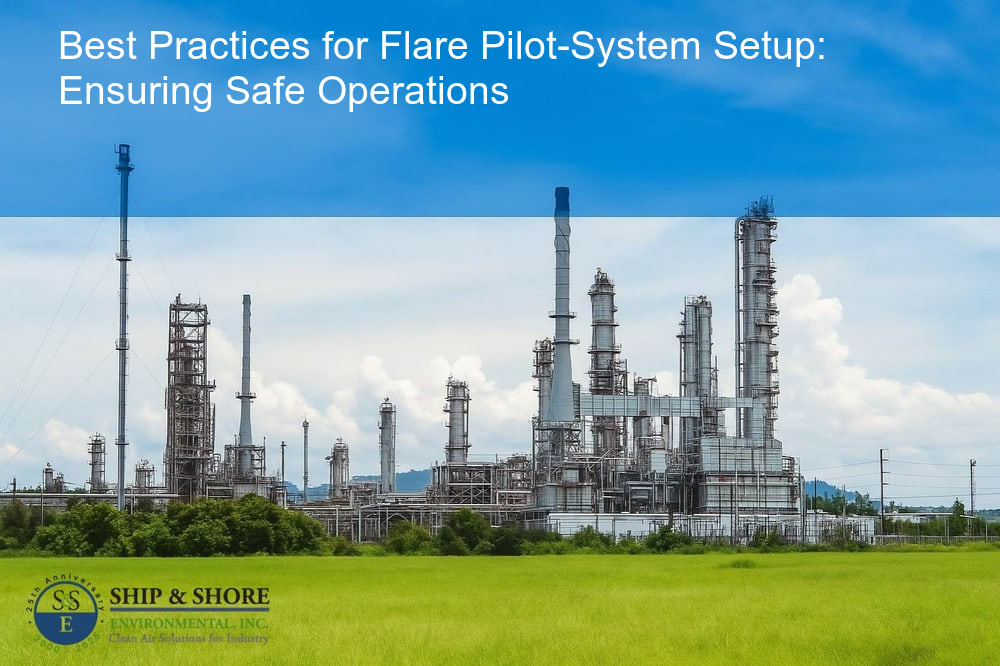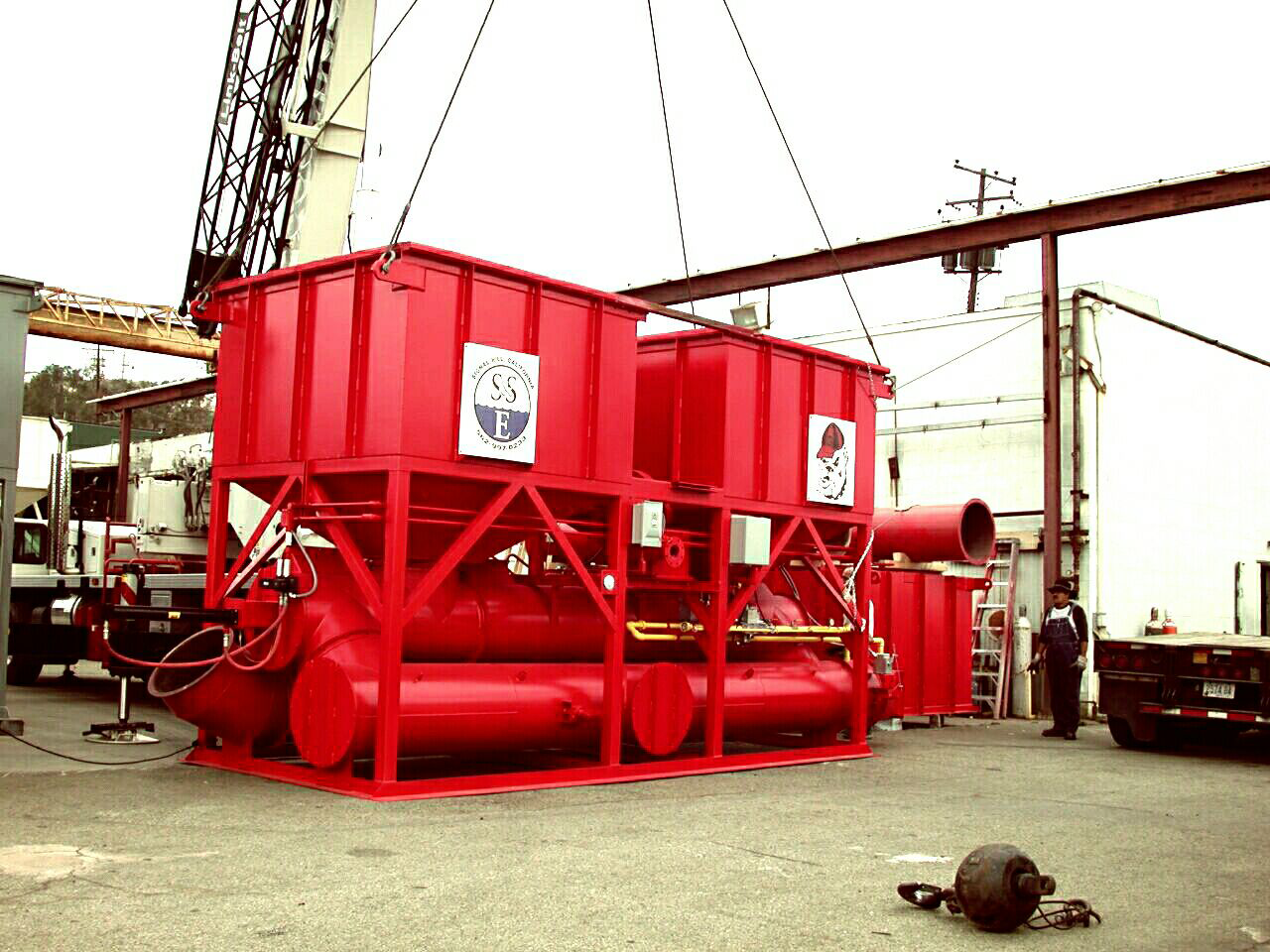
Best Practices for Flare Pilot-System Setup: Ensuring Safety
August 29, 2025 7:02 amImportance of Proper Flare Pilot-System Setup
A proper flare pilot-system setup stands at the core of any efficient and safe industrial operation, especially in sectors handling volatile gases. At Ship & Shore Environmental, Inc., we understand the significant impact it has on safeguarding the environment while optimizing operational efficiency. Adopting the best practices for flare pilot-system setup is essential to minimize risks and ensure consistent performance. This focus is not only key to maintaining regulatory compliance but also vital in fostering sustainable operations.
Understanding Flare Pilot-Systems: Preserving Safety and Efficiency
Flare pilot-systems are the backbone of flare stack operations, acting as the ignition source that ensures continuous burning of waste gases. The significance of this system lies in its dual role of protecting the environment and ensuring the safety of the facility. Whether dealing with routine flaring or emergency situations, a well-setup flare pilot-system efficiently combusts harmful hydrocarbons, thereby reducing emissions of noxious pollutants. It also helps in preventing the accumulation of uncombusted gases, which could pose significant safety hazards such as explosions.
Given the critical nature of this system, understanding its construction and operational parameters is crucial. Flare pilot-systems typically include components such as pilot burners, ignition systems, and flame detection mechanisms. These components need to be meticulously set up and regularly maintained to guarantee seamless operation. Our commitment is to aid industries in mastering these intricacies to establish a robust pilot-system setup.
Introducing the Best Practices for Flare Pilot-System Setup
Implementing the best practices for flare pilot-system setup involves a comprehensive approach that integrates advanced technology, regular maintenance, and adherence to regulatory standards. As technology evolves, the scope for enhancing the efficacy of flare pilot-systems expands, presenting opportunities to adopt more reliable and energy-efficient solutions. Innovations such as automated ignition systems, real-time monitoring, and advanced flame-detection technologies are transforming the landscape, making flare operations more dependable and less labor-intensive.
Our approach at Ship & Shore Environmental, Inc. is to guide our clients through these advancements, ensuring they can leverage the latest technologies to fortify their flare systems. By providing tailored solutions and expert consultation, we aim to elevate the standard of flare pilot-system setups across the industry. This focus not only enhances safety and efficiency but also aligns with our larger mission of environmental stewardship and industrial innovation.
Key Elements in Optimal Flare Pilot-System Setup: A Detailed Review
Ensuring the optimal setup of flare pilot-systems is paramount in maintaining industrial safety and operational efficiency. Proper ignition systems, reliable pilot flame detection, and suitable monitoring technologies are the cornerstones of an effective system. Each component must function correctly to prevent potential hazards, ensure compliance with environmental regulations, and maximize system longevity.
We emphasize the importance of regular maintenance and periodic testing to verify that all parts are working efficiently. Timely inspections can detect flaws early, preventing unforeseen failures. Furthermore, employing advanced technologies can significantly enhance system reliability and performance.
The Role of Innovative Technologies in Flare Pilot-System Setup
Technological advancements play a crucial role in optimizing flare pilot-system setups. Among these, flame ionization detectors, infrared sensors, and advanced control systems are noteworthy. They offer more precise monitoring and control, thereby reducing the risk of unplanned emissions and system failure.
Implementing remote monitoring systems can also bring significant benefits, as they allow for real-time data collection and analysis. This capability facilitates prompt decision-making and rapid response to any anomalies. In addition, integrating automated diagnostics can streamline maintenance processes, ensuring that we address issues before they escalate.
Best Practices for Flare Pilot-System Setup Implementation
Adopting best practices for flare pilot-system setup is essential for ensuring optimal performance and safety. Here, we share some of these vital practices:
- Conduct comprehensive risk assessments to identify potential hazards and implement mitigation strategies.
- Ensure all components are compatible and meet industry standards and regulatory requirements.
- Implement regular testing and maintenance schedules to keep the system in peak condition.
- Utilize real-time monitoring technologies to detect issues promptly and enable immediate corrective actions.
- Train personnel thoroughly on system operation, maintenance, and emergency procedures.
- Document all processes meticulously for tracking maintenance and operational history.
Real-World Examples of Best Practices for Flare Pilot-System Setup Implementation
Real-world implementations of best practices for flare pilot-system setup offer valuable insights into effective strategies. One notable example is a refinery that integrated advanced sensors and automated control systems into their flare pilots. This integration resulted in a 30% reduction in maintenance costs and improved system reliability significantly.
Another case involves a chemical plant that adopted a rigorous training program for its personnel. This program ensured that operators were well-versed in modern technologies and emergency response procedures, enhancing overall safety and reducing incident response times substantially.
Lastly, a petrochemical facility utilized remote monitoring to oversee their flare systems. This technology enabled continuous data analysis, which led to early detection of performance issues and facilitated timely interventions. By following these best practices, these facilities not only achieved regulatory compliance but also enhanced operational efficiency and safety.
Did you know? Proper flare pilot-system setup enhances safety by ensuring flammable gases are efficiently combusted, thereby preventing hazardous emissions and potential industrial accidents.
The Impact of Adequate Flare Pilot-System Setup on Industrial Operations
Efficient flare pilot-system setup is vital for our industrial operations, ensuring both safety and environmental compliance. Implementing Best Practices for Flare Pilot-System Setup can drastically reduce unplanned downtimes and mitigate risks associated with flare operations. Through optimal setup, we promote operational continuity and adhere to regulatory standards while optimizing performance. A well-structured flare system not only improves energy efficiency but also minimizes harmful emissions, making it a cornerstone of sustainable industrial practices.
Overcoming Challenges in Flare Pilot-System Setup: Tips and Insights
Setting up a flare pilot system comes with its own set of challenges. From selecting the right technology to ensuring compatibility with existing systems, the process can be complex. However, addressing these challenges head-on with a strategic approach can make a significant difference. Regular maintenance schedules, thorough system audits, and continuous personnel training are crucial in overcoming these hurdles. Additionally, adopting low-nox flares can further enhance system efficiency and environmental compliance. By staying proactive and leveraging cutting-edge solutions, we can ensure the reliability and effectiveness of our flare pilot systems.
A Forward Look: Future Trends in Flare Pilot-System Setup Practices
As technology evolves, so do the practices surrounding flare pilot-system setups. Emerging trends indicate a shift towards more automated and data-driven systems. Innovations like real-time monitoring, predictive maintenance, and IoT integration are set to revolutionize how we manage flare pilot systems. The emphasis is steadily moving towards maximizing energy efficiency while minimizing environmental impact. By keeping abreast of these future trends and embracing innovative solutions, we can stay ahead in achieving operational excellence and sustainability in our industries. Ultimately, Best Practices for Flare Pilot-System Setup will continue to evolve, driven by technological advancements and a growing commitment to environmental responsibility.
FAQ
What are the key benefits of an adequate flare pilot-system setup in industrial operations?
Adopting an adequate flare pilot-system setup in our industrial operations ensures enhanced safety, increased efficiency, and compliance with environmental regulations. It leads to reduced unplanned downtime, allows for continuous operation, and promotes sustainability through reduced emissions. Furthermore, a well-maintained system can contribute to energy savings and improve overall plant performance.
How does regular maintenance contribute to the effectiveness of flare pilot systems?
Maintenance is critical for ensuring flare pilot systems operate at peak efficiency. Scheduled checks and servicing prevent potential malfunctions and failures, which can lead to safety hazards and operational shutdowns. Moreover, consistent maintenance enables the system to run more efficiently, maximizing energy usage and reducing emissions, which in turn aligns with our dedication to sustainability.
Can the integration of innovative technologies enhance our flare pilot-system setup?
Definitely. The integration of cutting-edge technologies such as real-time monitoring, predictive analytics, and IoT connectivity can significantly enhance the operation of our flare pilot systems. These innovations lead to precise control, timely maintenance, and overall system optimization. Embracing such advancements positions us at the forefront of operational excellence and environmental stewardship.
What strategies are effective in overcoming challenges in flare pilot-system setup?
To effectively overcome challenges in flare pilot-system setup, we focus on strategic planning, which includes the selection of appropriate technologies, ensuring system compatibility, and conducting comprehensive training for personnel. Regular system audits, combined with responsive maintenance regimens, are instrumental in addressing any issues proactively. These strategies are paramount in maintaining a safe and efficient operational environment.
What future trends in flare pilot-system setup should we be prepared for?
We must be prepared for advancements that focus on automation, enhanced data analytics, and greener technologies in flare pilot-system setups. Anticipating the integration of AI-driven controls and sustainability-focused innovations will be key to staying competitive. Staying informed and ready to adapt to these trends will ensure that our operations remain safe, efficient, and environmentally conscious, mirroring our commitment to future-ready industrial practices.
Categorised in: Blog

